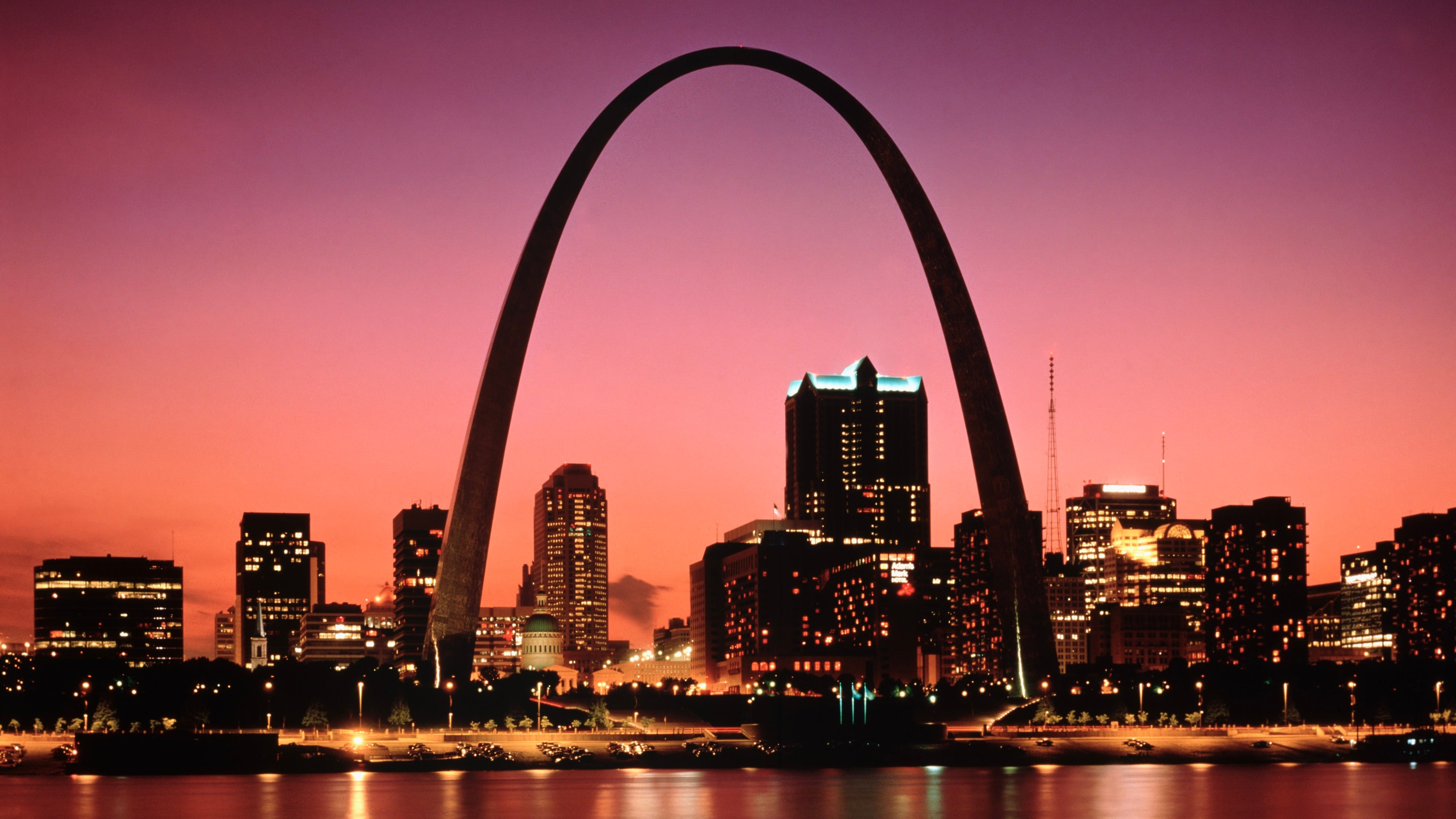Contents
- 1. The Gateway Arch Took Over 30 Years to Build
- 2. The Wrong Architect Was Initially Declared the Winner
- 3. A Fraudulent Election Approved the Arch’s Funding
- 4. The Arch Displaced a Historic African American Community
- 5. Unique Engineering Challenges Defined the Arch’s Construction
- 6. A Civil Rights Protest Took Place During Construction
- 7. Daring (and Tragic) Stunts Have Been Attempted
The St. Louis Gateway Arch, a towering symbol of westward expansion, boasts a rich history filled with unexpected twists and turns, from a controversial bond election to daring aerial protests.
 The Gateway Arch monument against the St.Louis skyline at sunset
The Gateway Arch monument against the St.Louis skyline at sunset
At 630 feet tall, with foundations extending 60 feet underground, the St. Louis Gateway Arch stands as the tallest man-made monument in the United States. This architectural marvel, designed to endure earthquakes and fierce winds, is a gleaming stainless steel parabola, attracting over a million visitors every year. While widely recognized as an emblem of St. Louis’s role as the “Gateway to the West,” the monument was initially envisioned as a tribute to Thomas Jefferson, the third U.S. President. His Louisiana Purchase in 1803 doubled the nation’s size and fueled westward exploration and expansion.
However, the project also addressed a more practical need. Luther Ely Smith, a St. Louis attorney and civic advocate, originated the idea of constructing a structure along the Mississippi River. His aim was to revitalize the decaying waterfront and replace its dilapidated buildings.
“The concept of the Gateway Arch symbolizing westward expansion was almost a secondary consideration to secure New Deal funding,” explains Tracy Campbell, author of The Gateway Arch: A Biography and history professor at the University of Kentucky. “The primary goal was to revitalize the St. Louis riverfront.”
Here are seven surprising facts about this iconic monument, from its inception to completion and beyond:
1. The Gateway Arch Took Over 30 Years to Build
Securing funding for the Gateway Arch began during the Great Depression in the 1930s. Although presented as a New Deal project that would create much-needed jobs, the undertaking proved controversial and expensive. Constructing such a massive structure necessitated demolishing nearly 500 existing buildings in the waterfront district, leading to numerous legal battles, according to Sean Rost, assistant director of research at The State Historical Society of Missouri. These lawsuits, along with the lengthy process of obtaining congressional and presidential approval, prolonged the project throughout the 1930s. World War II further stalled progress, delaying the design competition until 1947. In the 1950s, the Korean War hampered funding. Finally, after groundbreaking in 1959 and construction commencing in 1963, the arch opened in October 1965, costing nearly $15 million.
2. The Wrong Architect Was Initially Declared the Winner
In 1947, the Jefferson National Expansion Memorial Association launched a design competition for the monument. They received 172 submissions, including animal-shaped sculptures and a depiction of the Louisiana Purchase signing. Early on, local architect Harris Armstrong seemed to be the favorite with his design resembling “a giant plow.” However, the jury ultimately selected Eero Saarinen’s daring modernist design. “Its scale, dynamism, and integration with the landscape secured Saarinen’s victory,” explains Rost. In a regrettable blunder, the committee mistakenly telegraphed Saarinen’s father, Eliel, informing him he had won. It took three days to rectify the error.
3. A Fraudulent Election Approved the Arch’s Funding
In 1935, St. Louis residents voted on a $7.5 million bond issue, supplemented by federal funds, to finance the project. The election saw a suspiciously high turnout and approval rate. A subsequent investigation by the St. Louis Post-Dispatch uncovered “widespread fraud,” including fabricated votes.
4. The Arch Displaced a Historic African American Community
Clearing the land for the arch meant demolishing nearly 40 city blocks, displacing 290 businesses and impacting African American communities the hardest. This displacement was unfortunately common in cities aiming to replace what were deemed “blighted” areas with attractions and highways.
5. Unique Engineering Challenges Defined the Arch’s Construction
Building the Gateway Arch presented unprecedented engineering challenges. Every piece of the arch was unique, requiring precise fabrication and assembly. The insertion of an elevator within the curved structure was also groundbreaking. Remarkably, despite safety concerns, no lives were lost during construction.
 Construction of the Gateway Arch
Construction of the Gateway Arch
6. A Civil Rights Protest Took Place During Construction
In 1964, activist Percy Green and Richard Daly scaled the arch’s scaffolding to protest discriminatory hiring practices, highlighting the need for equal opportunities in landmark projects.
7. Daring (and Tragic) Stunts Have Been Attempted
The arch’s height and design have attracted daredevils. In 1980, a parachutist tragically died attempting to land on the arch. In 1992, a base jumper successfully parachuted from the top, but faced legal consequences.
The St. Louis Gateway Arch stands as more than just a monument; it embodies a complex and captivating history, reflecting both the triumphs and challenges of American progress.